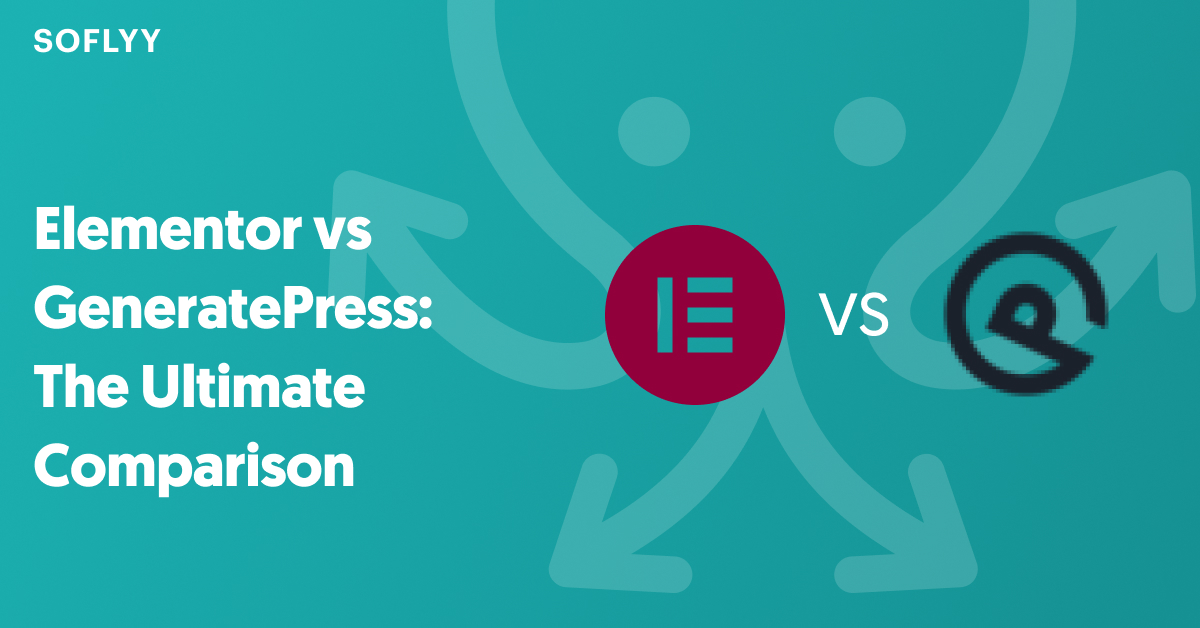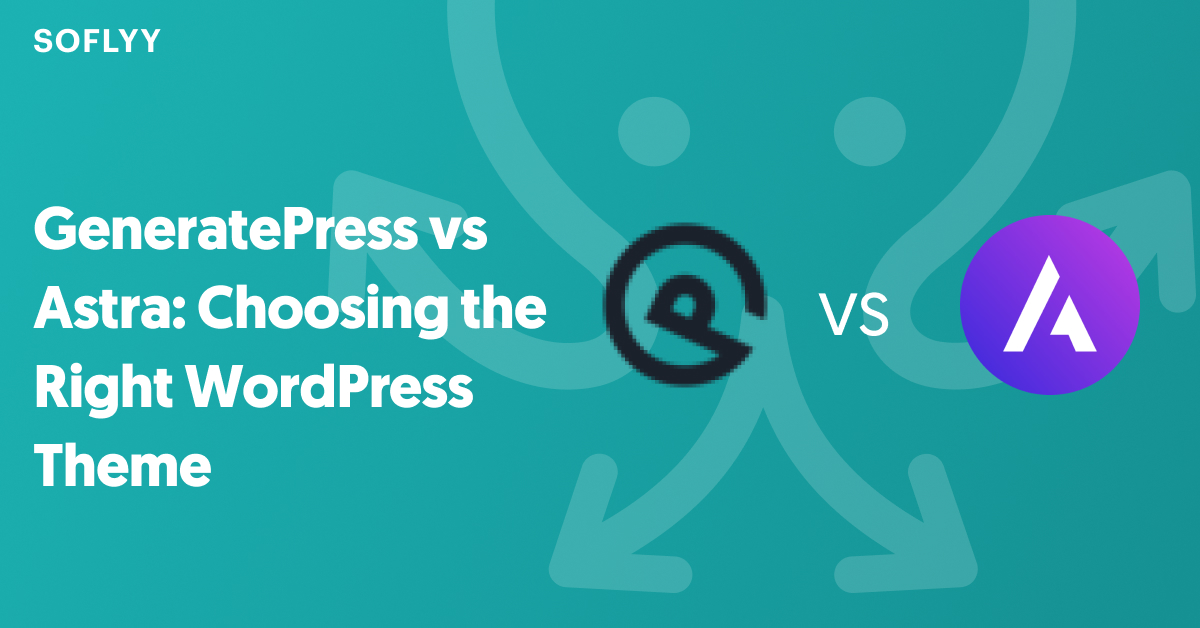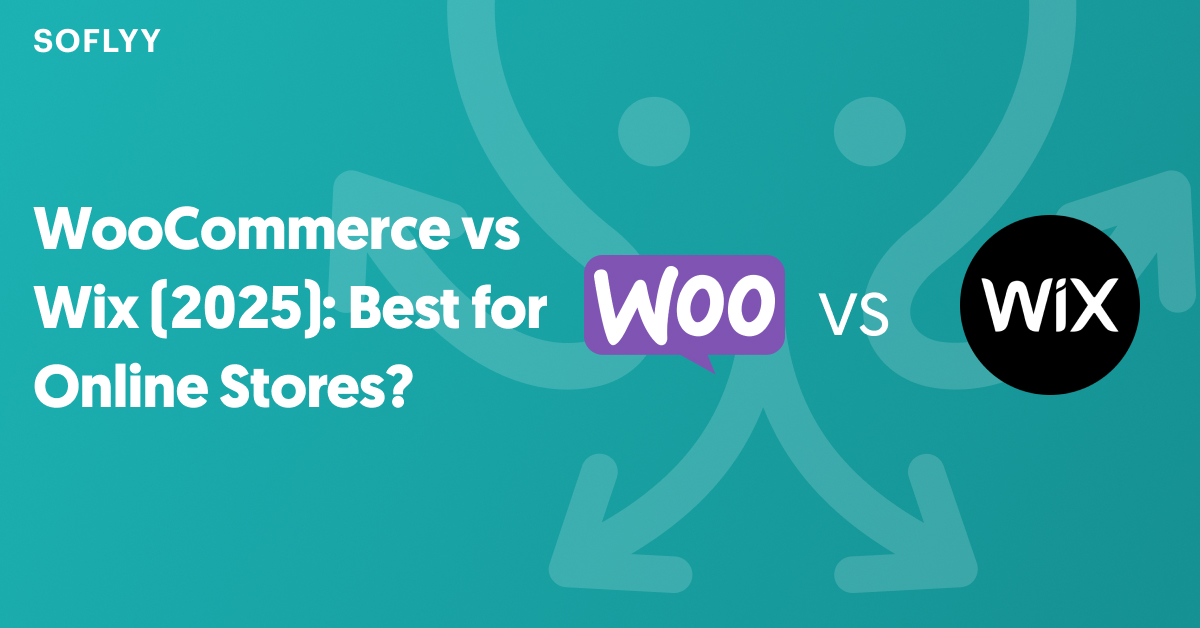Are you trying to decide between Divi and Avada for your next WordPress project? Choosing the right WordPress theme can make a big difference in how efficiently and cost-effectively you can manage and update your website. In this guide, we’re taking a close look at two of the leading themes in the market: Divi vs. Avada
Our aim is to help you determine which of these popular options will best streamline your website building process and save you money in the long run. Whether you’re building a site for yourself or for a client, we’ll guide you through each theme’s strengths and weaknesses so you can make the best choice for your needs.
Overview of Divi and Avada
Divi Overview
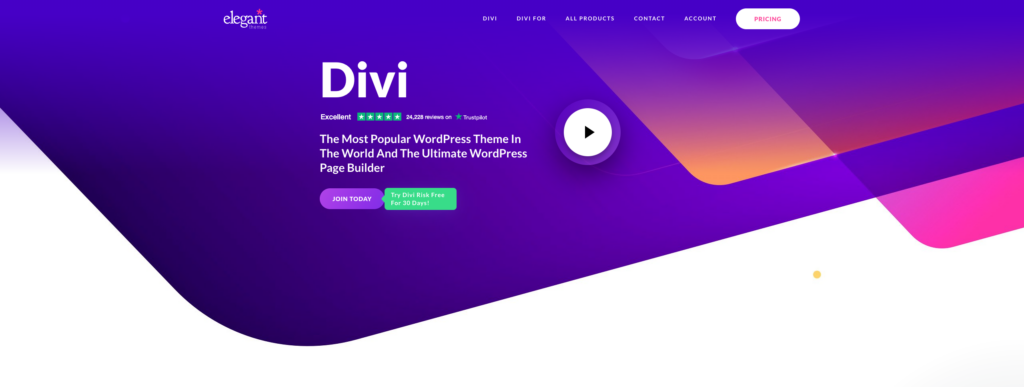
Divi is a popular page builder that serves both as a WordPress theme and a plugin. It’s a great Elementor alternative designed to make web design accessible to everyone, regardless of technical skill.
Advantages:
- Divi’s advanced visual drag-and-drop builder allows real-time editing, making it intuitive to create and adjust your website’s layout visually.
- Access a wide range of pre-made templates to kickstart your site without starting from scratch.
- Update the look across your entire site with a few clicks, ensuring a consistent design with less effort.
- Pay once and use Divi forever, which can be a cost-effective option if you’re managing multiple sites.
Disadvantages:
- Divi can be resource-intensive, meaning you need a more powerful hosting plan to ensure your site runs smoothly.
- While powerful, Divi’s wide array of options can be overwhelming for beginners.
Avada Overview
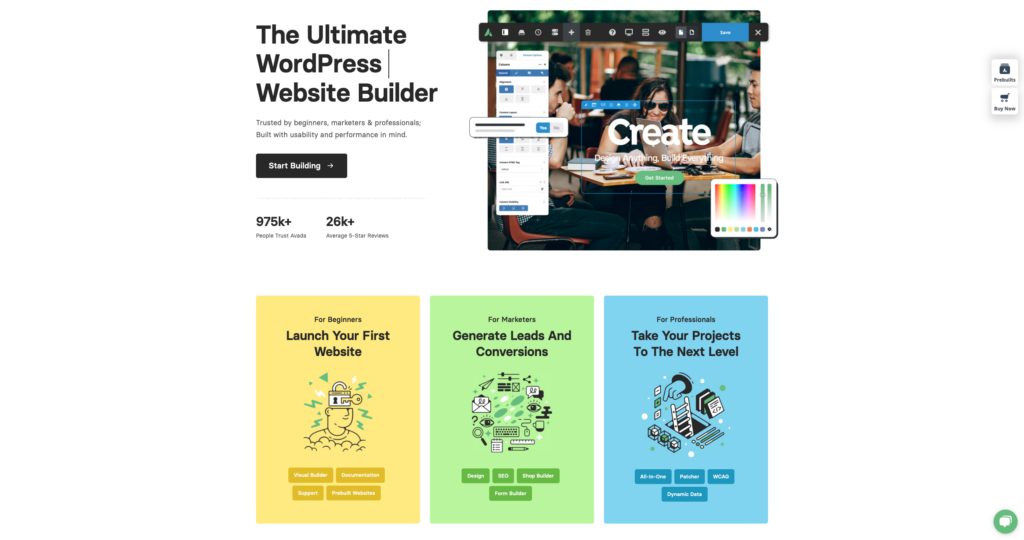
Avada is another top choice for WordPress users, known for its built-in Avada Builder which integrates seamlessly with the theme.
Advantages:
- Jumpstart your site design with pre-built websites and layouts that you can customize.
- Enjoy the freedom to tweak almost every aspect of your site’s appearance.
- Avada’s demos are designed for excellent performance, helping your site to load quickly and run smoothly.
Disadvantages:
- Unlike Divi, Avada doesn’t offer a lifetime purchase option, which means ongoing costs.
- Avada’s customization options can be daunting if you’re new to WordPress or web design in general.
Comparing Divi and Avada: Time and Money-Saving Features
Having looked at the pros and limitations of both Divi and Avada, let’s explore how these tools specifically save time and money. This Avada vs Divi review will help you pinpoint which builder will help in the website development process more effectively.
Divi vs Avada: User Interface and Ease of Use
Divi and Ease of Use
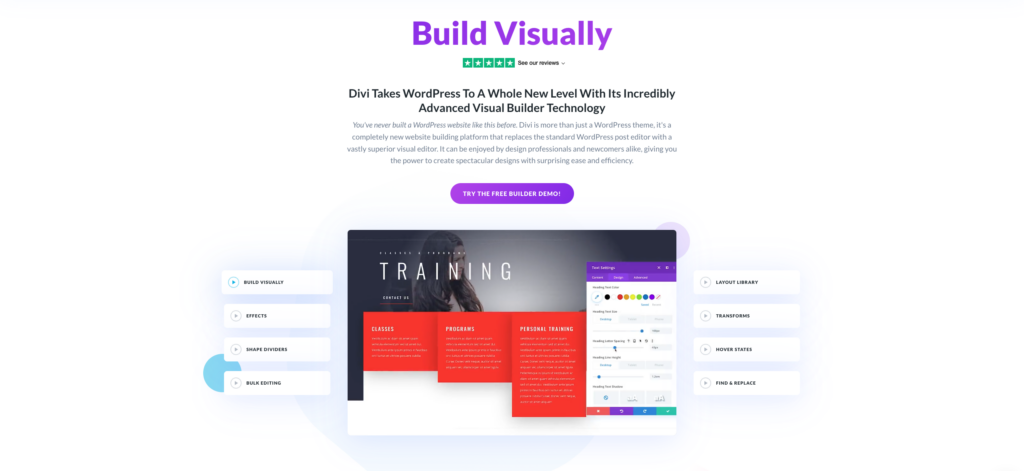
Divi’s user interface is centered around an intuitive drag-and-drop system that visually represents how your site will look as you build it. This approach not only makes the design process clearer but also faster, as you can see adjustments in real time. While Divi offers global design settings to speed up styling across multiple pages, new users might find there’s a learning curve to navigating its rich feature set effectively. A bit of WordPress experience can go a long way in using Divi’s features to the fullest.
Avada Interface and Ease of Use

On the other side, Avada comes equipped with its own set of pre-built demos accessible through the Avada Builder, designed to get your site up and running quickly. These demos are not only easy to install but also come with a variety of layout options, giving you the flexibility to adapt them without starting from scratch. However, the depth of Avada’s settings, while powerful, can be a bit overwhelming for those new to WordPress or who prefer a simpler, more straightforward setup. Avada focuses on speed and efficiency with these layouts, but the trade-off might be a steeper learning curve compared to more basic themes.
Which Builder Is Easier for Beginners?
Divi is generally more user-friendly for those who have some familiarity with page builders, thanks to its visual editing tools and comprehensive style management features. This makes it a great choice if you’re comfortable with drag-and-drop interfaces and want more control over your design from the start.
Avada, while it may present a steeper learning curve due to its complex options and settings, offers a significant time-saving advantage with its pre-built demos. These demos are particularly beneficial for beginners who prefer a quicker setup without the need to go deeply into design customization immediately. They allow new users to get a professional-looking site up and running faster, even if initially they might spend a bit more time learning the ropes.
Divi vs Avada: Customization and Design Features
Divi Customization
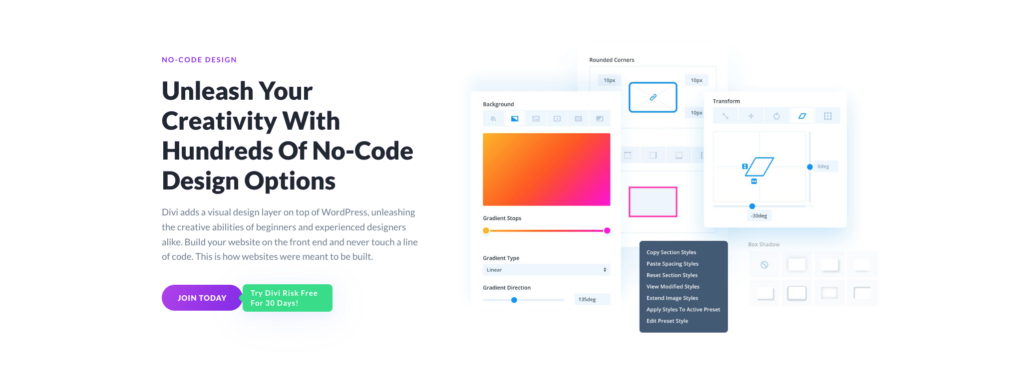
Divi provides you with full design control, which is great if you like to get hands-on with every aspect of your site’s appearance. With Divi features 2024, you can use CSS and custom code to tweak everything to your liking, which is ideal if you have some technical skills or are willing to learn. This level of control extends to Divi’s large collection of templates and pre-built elements, which you can start with and modify extensively.
Additionally, Divi’s global modules and dynamic content features are significant time-savers. These allow you to set up elements once and reuse them across your site, with the ability to update all instances from a single place. So, if you’re building a site with uniform branding or need to update information frequently, these features make it much easier to maintain consistency and efficiency.
Avada Customization
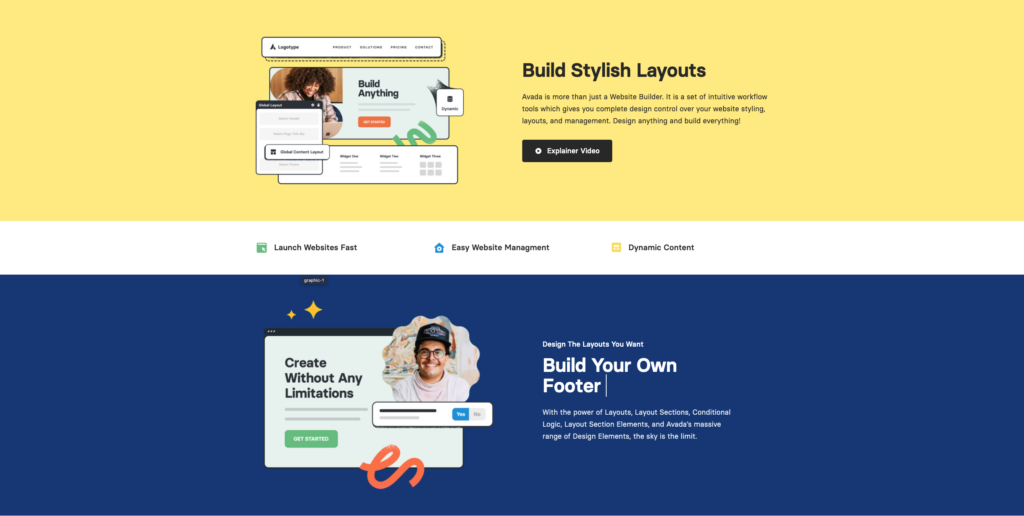
Avada also offers a wide array of design options through the Avada Builder. It offers thousands of customization choices that cater to nearly any design preference, as highlighted in this Avada theme comparison.
The platform offers adjustable pre-built demos, which are designed to get your site running quickly without starting from scratch. You can pick a demo that closely matches your vision and tweak it, reducing the time and effort needed to build something unique.
The theme also excels in providing flexible headers, footers, and layout controls. These are important areas of your site that can define its usability and aesthetic, and Avada allows detailed customization of these elements, ensuring you can align them perfectly with the rest of your design.
Which Builder Offers Better Customization Features?
In essence, Divi offers extensive design freedom, ideal for those who want complete control over every aspect of their website’s appearance. This makes it perfect for users who enjoy deep customization and have specific design needs. Whereas, Avada provides a quicker setup with its range of pre-built designs and demos, making it a great choice for users who need to get their sites up and running fast but might find it less flexible for intricate customizations.
Divi vs Avada: Performance and Speed
Each theme handles performance differently, and understanding these nuances will help you choose the right one for your needs, especially if your site features complex designs or you’re concerned about load times.
Divi Performance
Divi’s performance tends to decrease as the complexity of the website increases. Initially, with Divi installed on a simple WordPress setup, the performance remains high with PageSpeed Insights scores of 98 for desktop and 94 for mobile. However, when more elements like headings, buttons, and images are added, the page size grows significantly, and performance starts to drop.
For a page with several Divi modules, the page size reaches 576.4 KB, and HTTP requests increase to 23, resulting in lower PageSpeed scores of 93 for desktop and 89 for mobile. This demonstrates that Divi can handle basic designs well, but more complex layouts may require additional optimization and better hosting to maintain good speed.
Avada Performance
In contrast, Avada is known for its efficient code and optimized demo sites that are designed to perform well right from the start. This means you can set up a site with Avada and expect faster load times without as much need for additional optimization.
Avada’s cleaner coding and more streamlined design approach contribute to better out-of-the-box performance, making it a strong contender for users who need speed without extensive technical adjustments.
Which Builder Has Better Performance?
When comparing the performance of Divi vs Avada, Avada generally has the upper hand in terms of initial speed and efficiency. It is optimized to perform well immediately after installation, which can be particularly beneficial if you’re looking to get a site up and running quickly without getting into complex optimizations.
On the other hand, Divi’s performance is quite adaptable; with the right optimizations and hosting setup, it can match or even surpass Avada’s speed. This requires a bit more effort and possibly additional investment in optimization tools and services, but it allows for greater design complexity without sacrificing performance.
Divi vs Avada: Extensibility and Add-ons
As you build and expand your website, having access to a wide range of add-ons and plugins can significantly improve its functionality and adaptability. Both Divi and Avada offer support for several WordPress plugins and add-ons, each in its unique way. In our Avada vs Divi 2024 comparison, we’ll help you determine which might better suit your long-term needs.
Divi Add-ons
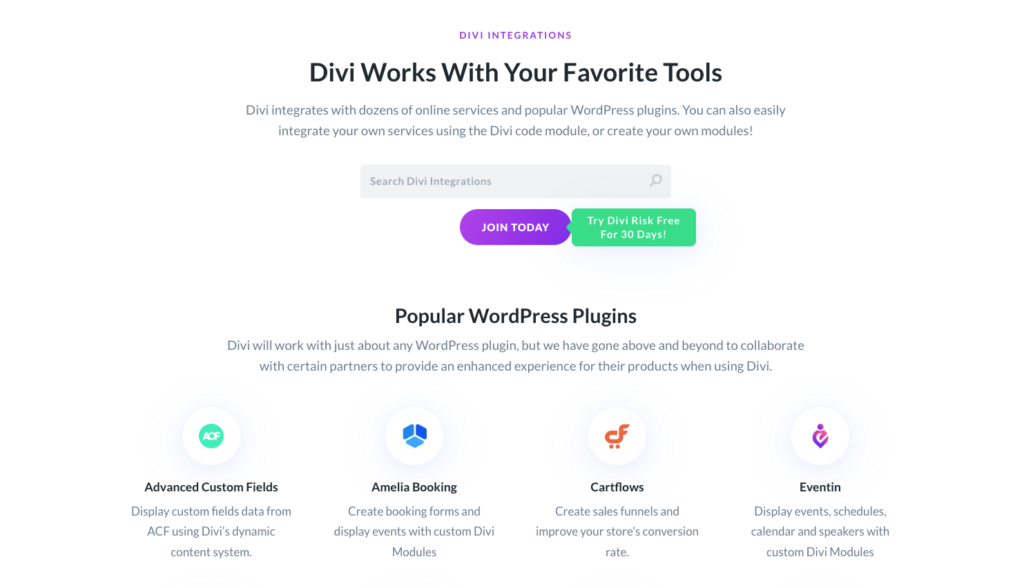
Divi is known for its seamless integration with a multitude of popular WordPress plugins, such as WooCommerce for e-commerce and Yoast SEO for search engine optimization. This compatibility allows you to extend the functionality of your website significantly without compatibility issues.
Additionally, the Divi marketplace is a treasure trove of third-party add-ons, offering thousands of custom modules and elements that you can use to add advanced functionality to your site. If you need unique interactive features or niche specific elements, there’s likely a Divi add-on that meets your needs.
Avada Add-ons
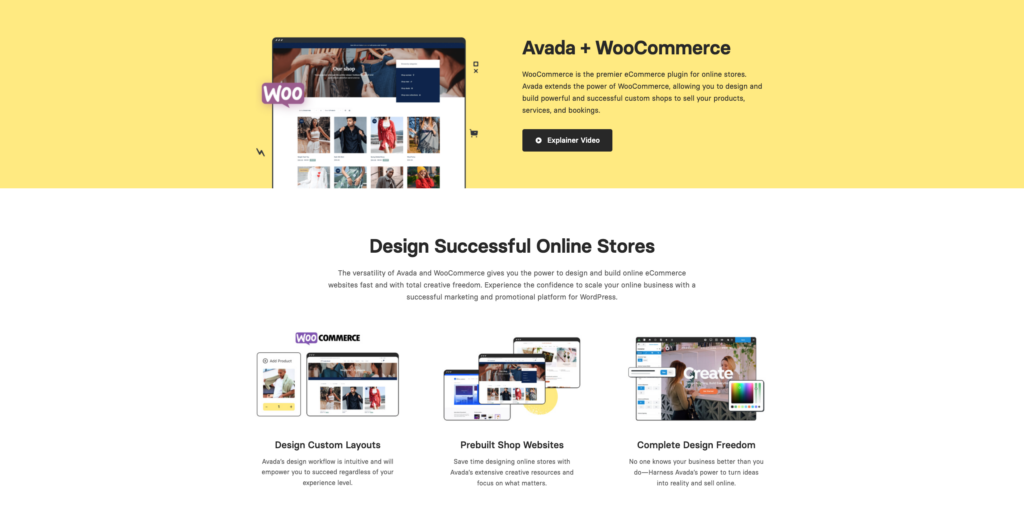
Avada also supports a wide range of WordPress plugins, though it has fewer third-party add-ons compared to Divi. However, Avada compensates for this by including more comprehensive built-in features that reduce the need to install additional plugins.
Its pre-built solutions for sectors like e-commerce, portfolios, and business sites include many specialized features that are ready to use out of the box. This approach can save you time and simplify the process of setting up and managing your site, as it reduces the need to search for and configure multiple external add-ons.
Which Builder Has Better Support for Add-ons?
Divi offers greater flexibility and a vast selection of third-party plugins, making it ideal if you foresee the need for extensive customization or require very specific functionalities that can only be achieved through specialized add-ons. This makes Divi particularly appealing to users who enjoy experimenting with new tools and customizing every aspect of their sites.
However, Avada is more streamlined in its approach, with fewer add-ons but more built-in options. This setup is beneficial if you prefer a more straightforward, less cluttered WordPress environment and want to get your site running quickly with as little fuss as possible.
Divi vs Avada: Pricing Plans
Here’s a breakdown of each theme’s pricing model to help you decide which offers the better deal.
Divi Pricing
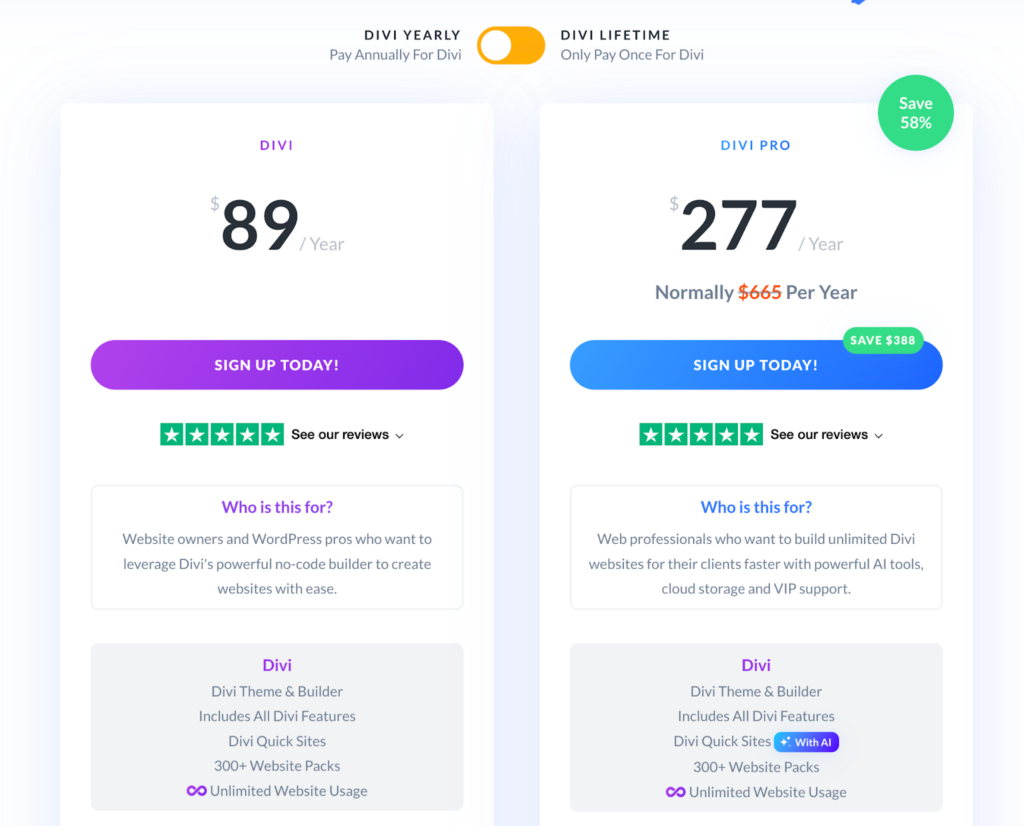
Divi offers two main pricing options:
- Yearly Subscription: For $89 per year, you get unlimited use across as many websites as you like. This plan includes all updates and premium support.
- Lifetime Access: For a one-time fee of $249, you gain lifetime access to Divi, including all future updates and support. This option is particularly cost-effective if you manage multiple websites or work on web projects regularly.
Divi’s pricing plans are designed to be flexible and budget-friendly, especially for agencies, freelancers, and anyone involved in managing multiple sites. The lifetime plan can significantly reduce long-term costs.
Avada Pricing
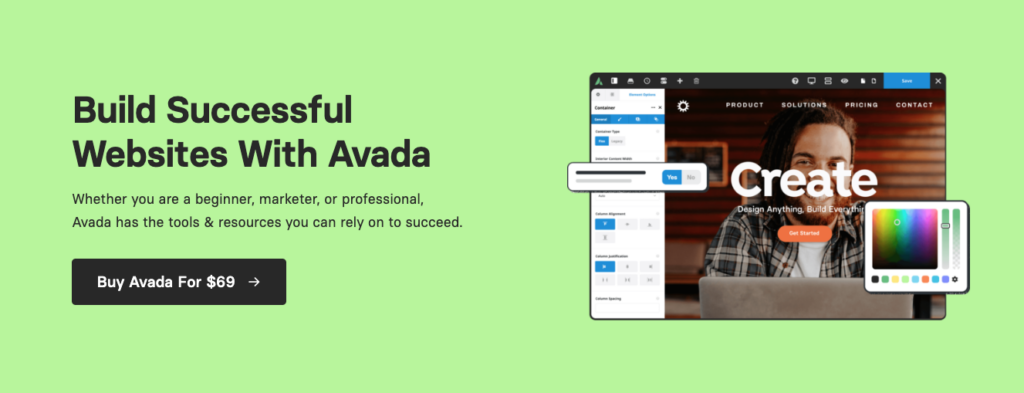
Avada’s pricing is straightforward:
- Regular License: $69 per website. This is a one-time fee that includes lifetime updates and six months of support for that specific site. Extended support can be purchased for an additional cost.
Unlike Divi, Avada does not offer a lifetime or unlimited website usage plan. Each new website requires a separate license purchase, which can add up but remains a cost-effective option for individuals or businesses needing a reliable theme for a single site.
Which Builder Offers More Value
If your work involves multiple websites, Divi’s pricing structure will likely provide better value over time. However, for single-site projects, Avada’s one-time fee per site can make more financial sense and simplify budgeting for your project. Choose the pricing plan that best aligns with your business model and project frequency.
Divi vs Avada: SEO and Marketing Features
Let’s explore the SEO and marketing features of Divi and Avada to see which theme might better serve your needs.
Divi SEO Capabilities
Divi is highly compatible with leading SEO plugins, like Yoast SEO, which helps to optimize your content and improve your site’s search engine rankings. While Divi allows complete control over SEO elements, such as meta titles, descriptions, and structured data, it often requires these additional plugins to fully optimize your site.
Moreover, because site speed is a significant factor in SEO, performance optimization with Divi is necessary to ensure your SEO efforts are successful. This means investing in proper hosting to keep your site running smoothly.
Avada SEO Capabilities
Avada also supports good SEO practices but takes a slightly different approach. It includes built-in SEO features that, while not as extensive or flexible as the combination of Divi and third-party plugins, provide a solid foundation for SEO right out of the box. Avada is optimized for faster performance, which is a direct benefit for SEO as search engines favor faster-loading sites.
Moreover, its built-in SEO settings are simpler to use, making it more accessible for beginners or those who prefer a more streamlined setup without the need to configure multiple plugins.
Which Builder Is Better for SEO and Marketing?
If you require detailed control over your SEO strategy and are willing to manage additional tools, Divi might be the better choice. However, if you value simplicity and speed in setting up an effective SEO foundation, Avada could be more suitable. Choose based on whether you prioritize depth of control or ease of use in your SEO efforts.
Divi vs Avada: Who Is It For
Here’s a detailed look at who might benefit most from each theme.
Divi Is Best Suited For
- Freelancers and Agencies: If you’re managing websites for multiple clients, Divi’s unlimited site licenses and extensive customization options make it a flexible and cost-effective choice. The ability to use the theme across multiple sites with a one-time fee can significantly reduce overhead costs.
- Designers and Developers: Those who prioritize having control over every aspect of their site’s design will find Divi’s highly customizable platform appealing. With its advanced design features and the ability to inject custom code, Divi is ideal for creating unique, sophisticated websites.
- Long-term Investors: For individuals or businesses planning to build multiple websites or require a theme that they can use indefinitely, Divi’s lifetime pricing plan offers a significant advantage. This one-time investment ensures access to all future updates and support without additional costs.
Avada Is Best Suited For
- Small Business Owners and Single-site Users: Avada is a great choice for those who need to get a site up and running quickly without the complexities of extensive customization.
- Users Seeking Pre-built Solutions: If you prefer not getting into the nuances of site design, Avada’s pre-built solutions provide a variety of ready-made layouts that require minimal customization. This makes it easier to maintain and update your site without needing deep technical knowledge.
- Those Needing High-Performance Websites: For users who prioritize speed and reliability but want to avoid the intricacies of performance optimization, Avada’s efficient coding and optimized demos ensure your site performs well right out of the box. This is particularly beneficial for those who need a high-performance website but lack the time or resources for extensive optimizations.
Which Is a Better WordPress Page Builder Between Divi and Avada?
Choosing the right WordPress theme is important for the success and efficiency of your website. The Divi vs Avada comparison is particularly important for those looking to select the best WordPress theme 2024, offering different strengths suited to various needs.
Divi is renowned for its advanced customization options, allowing full control over every aspect of a website’s design. This feature is ideal for web agencies and developers who need to create distinct, sophisticated websites that stand out. Additionally, Divi’s one-time lifetime pricing offers significant long-term value, making it a cost-effective option for those managing multiple sites.
Conversely, Avada excels in speed and efficiency, providing a quick setup with its range of ready-to-use demos. This makes it perfect for users who require a simple, efficient solution to get their site up and running promptly. Avada’s approach appeals especially to small business owners and individuals who value convenience and speed over extensive customization.
When deciding between Divi and Avada, consider your main priorities. If your project demands high customization and you’re involved in creating unique website designs, Divi is likely the better choice. However, if you need to quickly establish a professional online presence with minimal customization, Avada should be your go-to. Both themes are powerful, but your specific needs and project goals should guide your decision to ensure your chosen theme supports not just your current requirements but also future growth.
